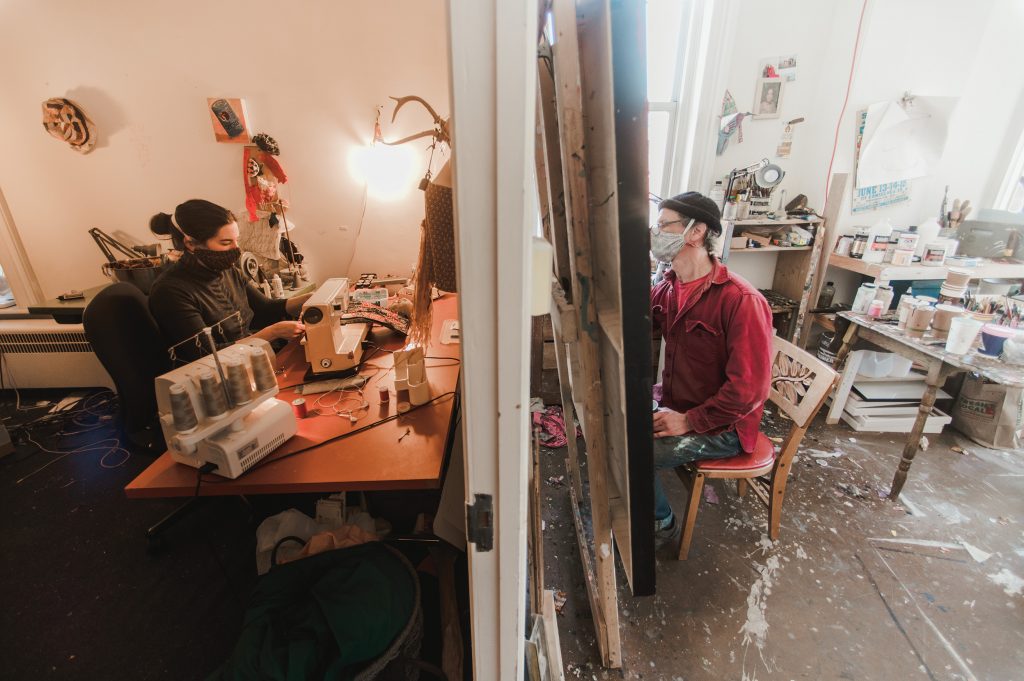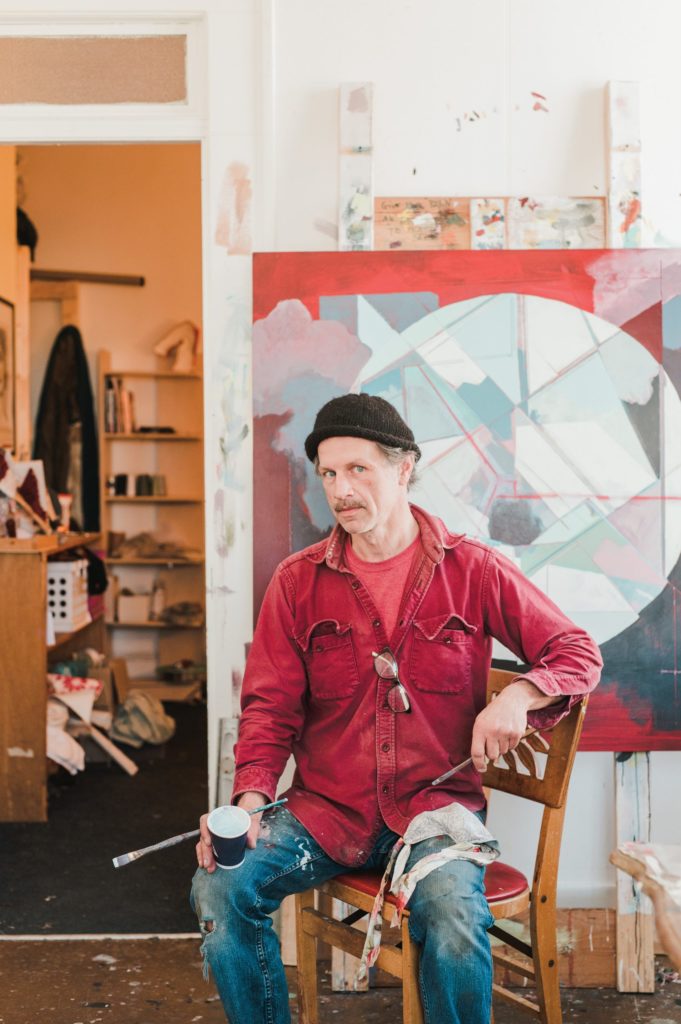The Arts Nonprofit Bolstering Biddeford
With a focus on community and a new leader on board, Engine is powering the rebirth of the southern Maine mill town.

A slow and steady ascension of arts and culture is underway in Biddeford. Bookstores and coffee shops have opened, former mill buildings have been reimagined, and creative enterprises have emerged on Main Street, resulting in one of the most vibrant urban areas in Maine. For the past decade, Engine—a multi-faceted arts nonprofit—has helped fuel this growth. “Our manifesto talks about transformation,” says Jess Muise, Engine’s new executive director and a lifelong artist. “I believe that arts are the most powerful tool for transformation, for us individually and in our communities.”
Muise, who has practiced as a dancer, educator, and arts facilitator around the world, most recently in Somerville, Massachusetts, looks around the front room of Engine’s current space. It’s a repurposed bank building on Biddeford’s Main Street that is close to Engine’s two previous homes—and to the unreconstructed Marble Block, a vast 1880s building which was once home to a vaudeville hall, boxing ring, and department store that has hovered on the periphery of Engine’s future since the organization acquired it in 2011. Engine, which was cofounded and led by Tammy Ackerman since 2010, is a motivated and scrappy organization, anchoring itself where it can, like a quick-witted urban bird. The current space’s front gallery area has been remade into a rough stage, with a white cloth stretched at an angle to form a backdrop through which a projector can be focused. Under Muise’s leadership, dance performances have been taking place regularly in this liminal, handmade theater. Watching from the sidewalk outside, safe from the pandemic-era dangers of indoor gathering, the audience experiences the frame of the plate-glass window as a proscenium. Deeper inside the building, studios are filled with creative work—from fine jewelry to painting to small-scale manufacturing. “It’s all so integrated. Artists in many ways are their own small business; they’re all entrepreneurs in some way,” Muise says. “People want to be creative producers and not just consumers, and want to reconnect with the innate human ability to create.”

Engine’s new executive director Jess Muise joined the downtown Biddeford arts nonprofit in January. 
Muise walks through Engine’s unfinished Marble Block space.
One example of this creative crossover is the studio of designer and craftsperson Erin O’Toole of Oterra Designs, which is in Engine’s production-oriented makerspace. “Even in the midst of the pandemic, where we aren’t able to utilize the common space and interact with our neighbors as much, you can still feel the creative energy in the air, and it’s really nice to know we are all a part of this community, making our art through some trying times,” says O’Toole, who makes innovative and beautiful chalk bags for rock climbers. The makerspace—a large central room stocked with various technical implements for creative construction—is part of a larger vision for entrepreneurial incubator opportunities, and is one of the projects that Muise sees as fostering community impact. Deeply invested in the idea of creatively generated economic growth, Muise, who comes from a long line of mill-town craftspeople, explains that she “can sense the energy of transformation in the very air of downtown Biddeford,” a city historically organized around the power of the Saco River and material production.
This energetic current allows a clear line of action from Engine’s work to the business and social communities around Main Street. The intersection between the fine arts and industry is crucial to this vision. “I think the separation of art and industry is a false separation. The ways we’ve been tracking economic data can’t quite get at the nuance and complexity of those who are involved in the creative economy,” says Muise, who began her role in January. “You go from the history of a community that was connected and formed around shared work in the mills, and what we see now is a shared desire for belonging in a community. We’re seeing that pop up in these small, independent creative businesses.”
In Engine’s upstairs spaces, the fine arts are moving forward in various traditional media as well. A darkroom provides a valuable community resource to photographers. “It has been absolutely incredible having a local darkroom that’s affordable and accessible at any hour, as there are truly limited resources for traditional photographers here in southern Maine,” says photographer Julie Gray, who relies on Engine’s darkroom to make prints. Chrystina Gastelum, a multimedia artist, member of Engine’s board of directors, and chair of Biddeford’s Conservation Commission, shares a studio with her husband, Sean Hasey, a painter whose work merges geometric lyricism with a narrative that revolves around text and stylized imagery. “Art isn’t a product—it’s a behavior,” says Gastelum. She has high hopes for Engine’s focus on community connection through creative action. “I think we will be able to continue to draw people—perhaps folks like me who didn’t consider themselves to be artists per se—into art-making and being artists, makers, or whatever terms people use for themselves, rather than alienate folks who are outside the machine of the art world.” Kifah Abdulla, another painter with a studio at Engine, agrees. “Art has the power to move people,” he says.

“I frequently arrive in the morning—in the dark—and very much look forward to sunrise so I can open the shades, turn off the lights, and work in the natural daylight,” Hasey says. 
Hasey’s studio worktable. 
Hasey at work.
In the sunshine on Main Street, people are cautiously approaching warmer weather and the eventual end of the pandemic. Across the street from Engine, masked shoppers are popping in and out of shops such as Wooven and Vieux, and heading for coffee at Elements, Time and Tide, or Part and Parcel. Engine’s window looks out at this activity with a sense of potential energy and positive momentum. “People are forming this community with the outcome of a sense of social fabric, place, and pride in Biddeford. There’s still an undercurrent of taking pride in one’s work, and we’re seeing a new expression of that; there’s a desire for tactile, real things,” says Muise, watching it all from inside, then adds, “I think I’m going to take a walk by the river.”





